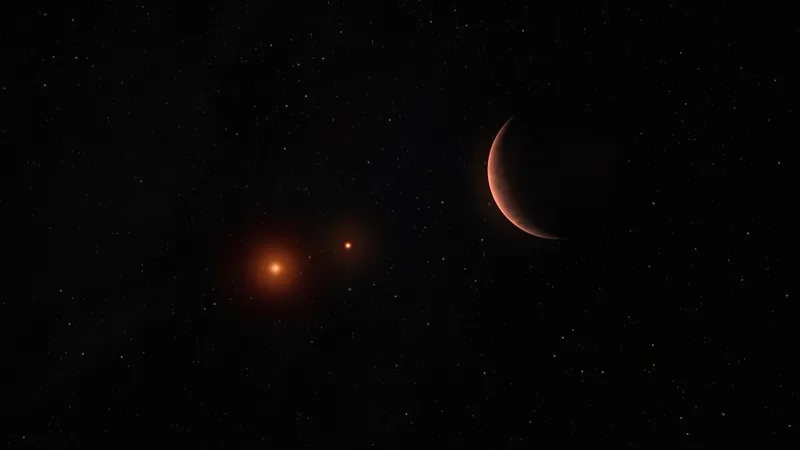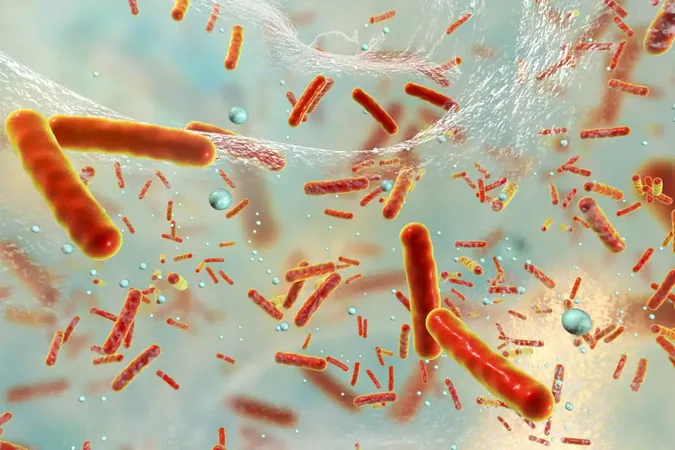
Discovering a Real-Life Tatooine: This Exoplanet Orbiting Twin Brown Dwarfs Could Reveal Secrets of Life on a Desert World
2025-05-04
Author: Michael
A Groundbreaking Discovery of a Tatooine-Like Exoplanet
Imagine a world that resembles Tatooine from "Star Wars," but with a twist—this newly discovered exoplanet, known as 2M1510(AB)b, orbits not around two bright suns, but rather around a pair of mysterious brown dwarfs. Even more astonishing, this planetary body takes a polar orbit—moving up and down over the poles of its stars instead of around their equator.
What Makes 2M1510(AB)b Unique?
In the Star Wars universe, Tatooine is iconic for its double sunsets. However, this unique exoplanet is only the second of its kind discovered orbiting two eclipsing brown dwarfs—objects that are too small to sustain nuclear fusion and often referred to as 'failed stars.' Out of thousands of binary systems in our Milky Way, only 16 have been identified to support planets in a circumbinary orbit, making 2M1510(AB)b an exceptional find.
The Science Behind This Discovery
When scientists, led by astronomer Amaury Triaud, initially targeted the brown dwarfs using the Very Large Telescope in Chile, they stumbled upon an unusual gravitational tugging effect, suggesting the presence of a large planet. Although specifics like its mass and orbital period remain unknown, estimates suggest it could be 10 to 100 times the mass of Earth.
Exploring the Climate of a Circumbinary Planet
What does life look like on this planet? With its complex dance around two stars, 2M1510(AB)b would experience unique seasonal patterns unlike anything on Earth. The planet’s day length would vary significantly depending on the stars' distance from each other, creating intriguing climate dynamics. For instance, the planet could enter and exit the habitable zone depending on its alignment with the stars, leading to fluctuating conditions for potential life.
Will We Find Life on 2M1510(AB)b?
The likelihood of discovering life on 2M1510(AB)b is slim. Brown dwarfs are cool and fail to emit the necessary heat for liquid water, a critical ingredient for life as we know it. Nevertheless, this discovery adds a fascinating chapter to our understanding of how celestial mechanics work in binary systems.
A New Frontier in Exoplanet Research
With the exploration of 2M1510(AB)b offering insight into polar circumbinary planets, scientists are just beginning to unravel the mysteries of what it would truly mean to live on a desert planet orbiting twin stars. While Luke Skywalker may long for a different life on Tatooine, the reality of such worlds is far more complex and mysterious than cinematic adventures portray.









 Brasil (PT)
Brasil (PT)
 Canada (EN)
Canada (EN)
 Chile (ES)
Chile (ES)
 Česko (CS)
Česko (CS)
 대한민국 (KO)
대한민국 (KO)
 España (ES)
España (ES)
 France (FR)
France (FR)
 Hong Kong (EN)
Hong Kong (EN)
 Italia (IT)
Italia (IT)
 日本 (JA)
日本 (JA)
 Magyarország (HU)
Magyarország (HU)
 Norge (NO)
Norge (NO)
 Polska (PL)
Polska (PL)
 Schweiz (DE)
Schweiz (DE)
 Singapore (EN)
Singapore (EN)
 Sverige (SV)
Sverige (SV)
 Suomi (FI)
Suomi (FI)
 Türkiye (TR)
Türkiye (TR)
 الإمارات العربية المتحدة (AR)
الإمارات العربية المتحدة (AR)